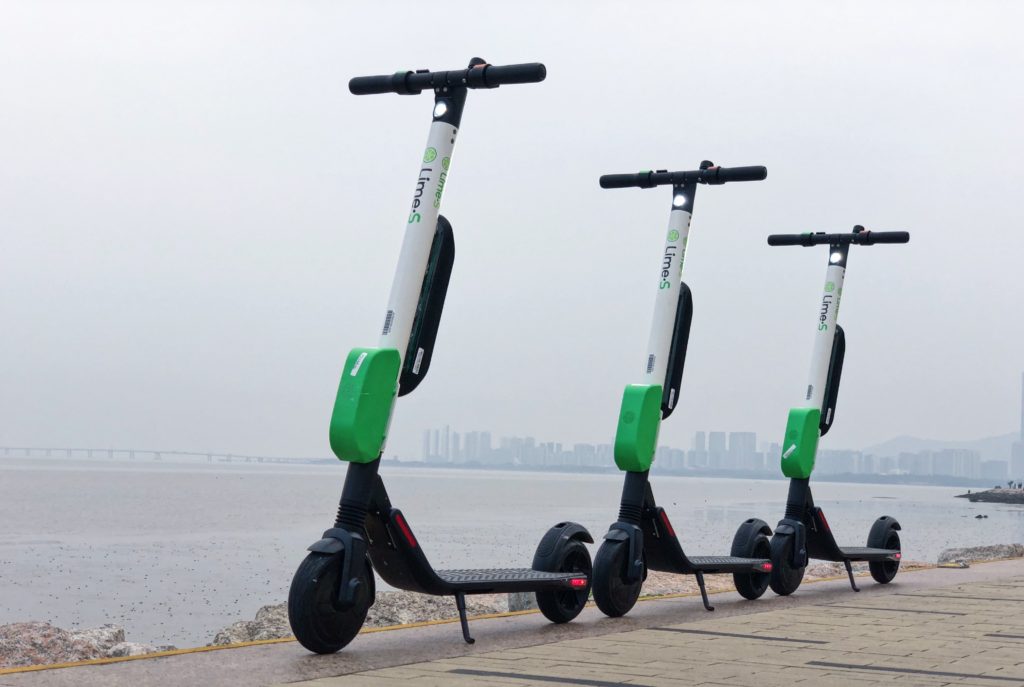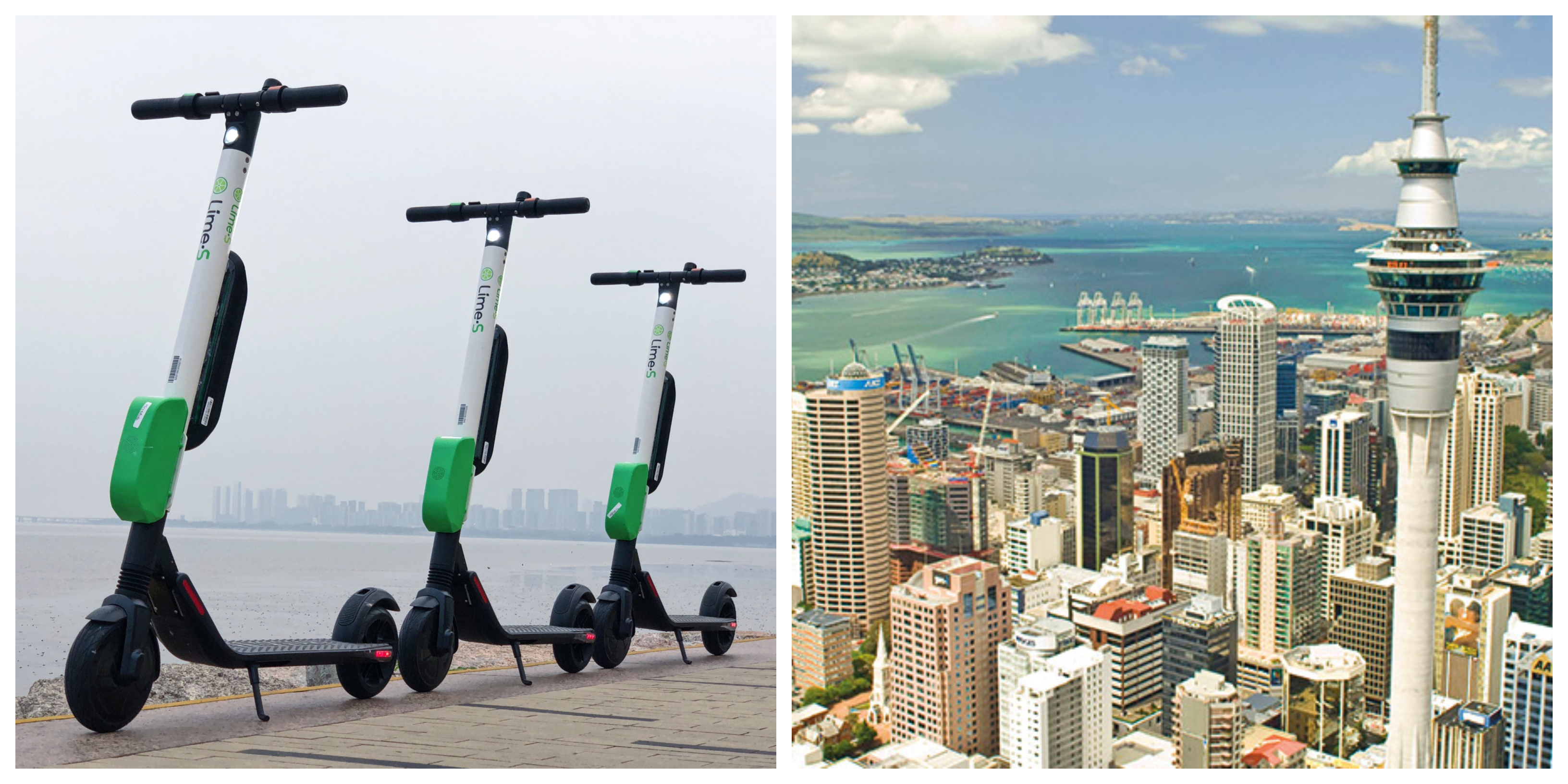The Lime scooters are as controversial as they are innovative, and now Auckland Council has acted on the criticisms the highly-popular app-based ride receives by suspending their license until the company addresses safety concerns that many have raised.
A number of injuries had been reported due to design malfunctions, including an Auckland man who experienced braking problems which left him with gashes and bruises. Dean Kimpton of the Auckland Council also stated that there were 92 “irregular breaking incidents” reported in the super-city since the scooters were introduced.
In addition, there have been “155 breakages related to wheel locking” according to Kimpton, which was the focus of the council discussions which eventually led them to suspend Lime’s license until the safety issues have been addressed by the California-based company.
Auckland Council had only just extended the company’s permit to operate in early January, having decided that they would further observe what the scooters’ “risk profile is really like”, according to Shane Ellison of Auckland Transport. That extension would have lasted until the end of March, but it seems that the days of Lime scooters is coming to an abrupt end due to safety issues.
But are Lime scooters really as dangerous as they are made out to be?
Since their introduction to Auckland’s streets, the scooters have been the target of a multitude of criticisms. Safety issues were always one, but many had also complained about the ride as a “nuisance”, due to their use on footpaths, and as an “eyesore” since they are left scattered virtually anywhere.
It also did not help Lime’s public image that mainstream news sources like Stuff and The New Zealand Herald have written a chorus of articles featuring complaints made by several of its users, many of whom with a high-profile such as former Auckland councilor Christine Fletcher.
But do we judge the riskiness of an endeavour based on how many prominent personalities have near-death experiences with it? Former Labour MP Judy Keall was hospitalized following a head-on car collision, while British politician Nigel Farage narrowly survived a helicopter crash while campaigning in the 2010 general elections.
Both methods of transport are still widely used today.

Opponents have also pointed out the lack of helmets by users of the ride, unlike cyclists or users of manual scooters which are both required to use such protection. They have also missed the fact that skateboarders or roller-skaters don’t usually wear any headgear either, but there seems to be far less criticisms of those recreational activities compared to Lime scooters.
In fairness to Auckland Council, the issue raised which eventually led to their recent suspension of Lime’s license was due to the malfunctions that were inherent to the scooters’ design itself. That is a flaw not associated with external forces such as user behaviour or safety gear.
However, aren’t vehicles just as susceptible to design malfunctions or mechanical errors?
It was just reported last month that 2018 was the worst year in a decade for road deaths, with 380 road deaths reported in the twelve months since December 2017. Those are just the fatalities, how many more were seriously, or even just moderately, injured by vehicle accidents?
Those figures sure dwarf the “30 reported injuries” from Lime scooters since their introduction so far.

Many would counter-argue and say that car accidents are mostly due to factors not inherent to the vehicle itself: driving under the influence, over-speeding or distracted drivers’ cannot be faulted on the car itself. But what about the numerous times various car manufacturers recalled their product over faulty design?
Just this month automobile giant Ford Motors recalled 1.8 million cars and pick-ups over safety concerns, Japanese car manufacturer Toyota recalled 4 million cars in 2009 over concerns about their gas pedals while Volkswagen recalled over 8.5 million diesel vehicles all over Europe in 2016 over a software glitch that allowed users to cheat emissions tests.
All three brands are among the biggest corporations in the world and have existed in the auto industry for decades, many will purchase new models they will release in the future and a vast number of people worldwide still drive their units today without thinking twice about the brand’s quality or safety.
Why can’t we afford the same patience to Lime scooters, a mode of transport that is helping individuals ditch the use of their own vehicles for short-distance travel?
Being a battery-powered electric scooter, the Lime scooters do not have carbon emissions which will help the Government’s goal to achieve carbon neutral status by 2050. These scooters may not be used to travel great distances, but if one were to commute from one end of Auckland’s CBD to another – they may forego using their own vehicle, or getting on an Uber, but instead will use these eco-friendly scooters.
As with any form of transport, the rider needs to be aware of the risks involved when availing of a Lime scooter. They must be realistic with the speed they are traveling at, and also be wary of pedestrians who ply the footpath which they share.
The minimum age restriction for the use of Lime scooters, which is currently at 18 years old, should also be properly enforced.
Safety gear such as helmets should be encouraged by the company, but it is unfair if Lime will be required to shoulder these provisions because such equipment can be easily stolen. Rational adults should be aware anyway of the risks associated with not having a helmet, and if they feel it is too much of a danger they can secure their own.
All of these can be implemented with an information drive, which should be easy enough to do given how popular Lime is and can be done through their phone apps – which anyone who wants to use a Lime scooter will have.
There are simple, doable solutions to save the Lime scooters from disappearing permanently. Auckland Council should work with the US-company to find common ground and ensure that Auckland residents will continue to use this eco-friendly transport mode of the future.


I think the scooters are great. The footpaths in the city are well underused and there is room for scooters and bikes on them.
The main complaint seems to be the manners of the persons using them. I could contend that the manners of pedestrians also should be held to account. How often have you faced a group of peds who refuse to make way for you coming head on and when you are trying to get past.
Another complaint is the speed at which the scooters travel. Well get Lime to ‘govern’ the speed and make the scooters incapable of high speeds.
Lets put bikes onto the footpaths too – and not just for kids and seniors. All those underused paths on the side of roads could be put to good use.